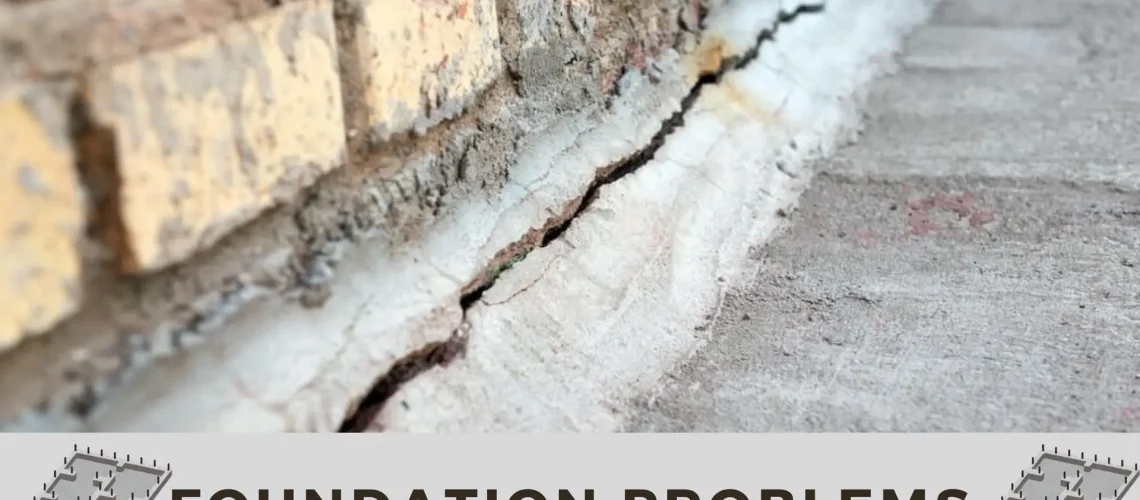When buying a home, few aspects are as crucial as the foundation. A strong foundation provides stability for the entire structure, while issues in this critical component can lead to expensive repairs, safety hazards, and reduced property value. By understanding the signs, causes, and potential solutions for foundation problems, you can make an informed decision during the home-buying process.
1. Why a Solid Foundation Matters
The foundation supports more than just the walls; it stabilizes the entire house against natural settling, soil movement, and weather changes. When the foundation is compromised, the consequences can be significant:
- Structural Damage: Cracks in walls, uneven floors, or doors and windows that won’t close properly often point to foundation issues.
- Water Damage: A faulty foundation can allow water to seep into basements or crawl spaces, leading to mold, rot, and structural deterioration.
- High Repair Costs: Foundation repairs can range from minor fixes to extensive restorations costing tens of thousands of dollars.
2. Common Warning Signs of Foundation Problems
Although a professional home inspector is trained to spot foundation issues, knowing the warning signs can help you identify potential red flags early:
- Cracks in Walls or Foundation: Small vertical cracks might be harmless, but large horizontal cracks, stair-step patterns, or diagonal cracks near windows and doors could indicate serious issues.
- Uneven or Sloping Floors: Floors that slope or feel uneven may signal foundation settling or shifting.
- Sticking Doors and Windows: Difficulty opening or closing doors and windows can occur when a shifting foundation distorts the frames.
- Basement Water Intrusion: Water pooling in the basement or crawl space often stems from cracks in the foundation or poor drainage.
- Gaps Between Walls and Floors or Ceilings: Visible gaps that widen over time suggest uneven foundation settling.
3. What Causes Foundation Problems?
Foundation issues don’t happen overnight; they develop over time due to environmental and construction-related factors, such as:
- Soil Movement: Expansive soils, like clay, expand when wet and shrink when dry, exerting pressure on the foundation.
- Poor Drainage: Water pooling near the foundation can weaken the soil, causing the home to settle or shift.
- Tree Roots: Roots from nearby trees can push against the foundation or deplete moisture from the surrounding soil.
- Improper Construction: Inadequate soil preparation or poor reinforcement during construction can lead to foundation instability over time.
4. What to Do If Foundation Issues Are Discovered
Finding foundation problems during a home inspection isn’t necessarily a deal-breaker, but it’s crucial to take the right steps:
- Seek Expert Advice: Have a structural engineer or foundation specialist assess the extent of the problem and recommend solutions.
- Understand Repair Costs: Repair expenses vary widely—from sealing small cracks to installing foundation piers. Get multiple quotes from reputable contractors to gauge the financial impact.
- Negotiate with the Seller: If issues are uncovered, request that the seller either covers the repair costs or reduces the sale price accordingly. Be prepared to walk away if the seller isn’t willing to address significant problems.
- Evaluate Long-Term Effects: Even after repairs, consider how the home’s history of foundation issues could affect its resale value or require ongoing maintenance.
5. Preventing Future Foundation Issues
Whether you purchase a home with a repaired foundation or want to protect your investment, proactive maintenance can help prevent future problems:
- Ensure Proper Drainage: Clean gutters and downspouts regularly and make sure water flows away from the foundation. Installing a French drain or grading the yard may also help.
- Monitor for Cracks: Inspect walls, ceilings, and the foundation periodically for new or widening cracks, and address issues promptly.
- Maintain Soil Moisture Levels: In areas with expansive soils, consistent soil moisture around the foundation is critical. Consider installing drip irrigation to prevent drastic changes.
- Plant Trees Wisely: Keep large trees at least 20 feet from the home to minimize root interference with the foundation.
Conclusion
Understanding foundation issues and their implications is essential when purchasing a home. By recognizing potential warning signs, assessing the severity of any problems, and taking preventive measures, you can protect your investment and avoid unexpected surprises. When in doubt, always consult with professionals to ensure the foundation of your future home is as solid as it should be.


